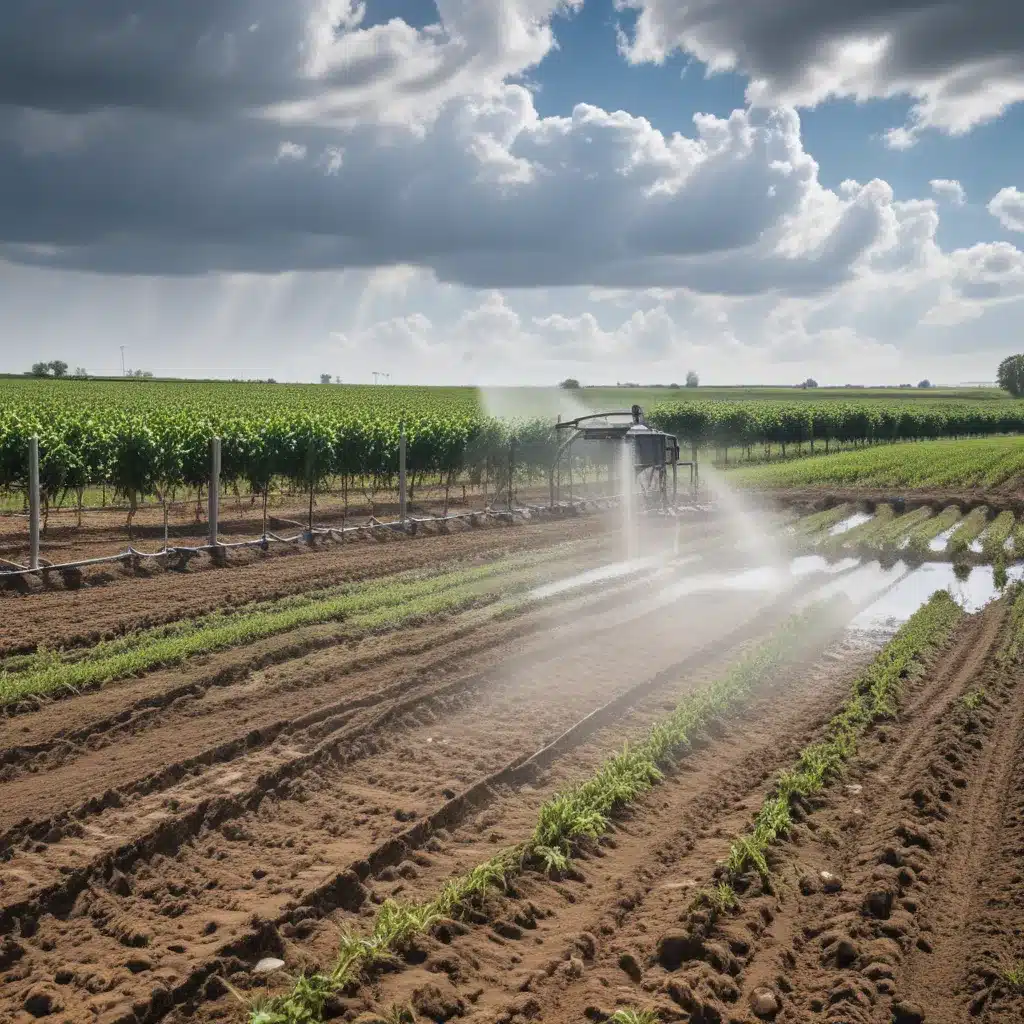Irrigating My Lawn with an AI? You Bet Your Boots!
As a self-proclaimed tech enthusiast and proud homeowner, I’ve always been on the lookout for ways to leverage cutting-edge technologies to streamline my daily routine. But when my local water company started cracking down on lawn watering restrictions, I knew I had to get creative. That’s when I stumbled upon the fascinating world of IoT-powered irrigation systems – and let me tell you, it’s been a game-changer!
Drowning in Data: The Rise of Smart Farming
These days, it seems like the agriculture industry is drowning in a deluge of data. From soil moisture sensors to satellite imagery, farmers are inundated with a constant stream of information about their crops and fields. But what good is all this data if you can’t make sense of it? [1]
That’s where the Internet of Things (IoT) comes into play. By connecting all these disparate data sources through a network of smart devices, farmers can gain unprecedented insights into their operations and make more informed decisions about water usage. [2] It’s like having a crystal ball that lets you see exactly when and where your plants need a drink.
Thirsty Crops and Parched Wallets
One of the biggest challenges facing modern agriculture is the scarcity of water resources. As the global population continues to grow, the demand for food production is putting an ever-increasing strain on our limited water supplies. [3] And let’s not forget about the financial strain on farmers – those sky-high water bills can quickly add up, eating into their already thin profit margins.
But fear not, my tech-savvy friends! IoT-powered irrigation systems are here to save the day. By using a network of smart sensors to monitor soil moisture levels, these systems can precisely deliver water only when and where it’s needed, reducing wasteful overwatering and keeping those water bills in check. [4]
A Sustainable Future, One Drip at a Time
Imagine a world where your lawn stays lush and green without you having to obsessively check the weather forecast or run out with a garden hose every other day. That’s the promise of IoT-powered irrigation, and it’s not just about saving water – it’s about creating a more sustainable future for all of us.
By optimizing water usage in agriculture, these smart systems can help us conserve precious natural resources and reduce our environmental impact. [5] It’s like having a personal water-saving assistant that’s always on the job, ensuring that every drop counts.
Putting the “Smart” in Smart Farming
But the benefits of IoT-powered irrigation go beyond just water conservation. These systems can also help farmers boost their crop yields and improve the overall health of their plants. [6] How, you ask? By using advanced algorithms to analyze real-time data from soil sensors, the system can automatically adjust irrigation schedules to match the specific needs of different crops and growing conditions.
Imagine a world where your lawn stays lush and green without you having to obsessively check the weather forecast or run out with a garden hose every other day.
It’s like having a team of expert gardeners on call, 24/7, ready to tailor the watering regimen to each individual plant’s needs. And with the ability to remotely monitor and control the system from your smartphone, you can say goodbye to the days of manually turning the sprinklers on and off. [7]
The Future is Bright (and Efficient)
As someone who’s always been captivated by the latest tech trends, I can’t help but feel a sense of excitement when I think about the future of IoT-powered irrigation. Just imagine a world where every farm and garden is equipped with a network of smart sensors, automatically adjusting water flow to maximize efficiency and minimize waste. [8]
It’s a future where we can have our lush, verdant lawns and eat our sustainably-grown crops too. And as a proud homeowner, I can’t wait to be at the forefront of this technological revolution, doing my part to conserve water and cultivate a greener, more prosperous tomorrow.
[1] Preite, L., Solari, F., & Vignali, G. (2023). Technologies to Optimize the Water Consumption in Agriculture: A Systematic Review. Sustainability, 15(7), 5975. https://doi.org/10.3390/su15075975
[2] Stanford News. (2023, April 27). Better, faster tool for saving water on farms. https://news.stanford.edu/2023/04/27/better-faster-tool-saving-water-farms/
[3] LinkedIn. (n.d.). How can IoT sensors help farmers reduce water. https://www.linkedin.com/advice/0/how-can-iot-sensors-help-farmers-reduce-water
[4] IBM. (2019). CFC 2019 Internal Finalist: Liquid Prep. https://developer.ibm.com/callforcode/blogs/cfc-2019-internal-finalist-liquid-prep/
[5] VLSCI. (n.d.). Water Conservation in Agriculture. https://vlsci.com/blog/water-conservation-in-agriculture/
[6] NIDWATER. (n.d.). Water Conservation in Agriculture. https://www.nidwater.com/water-conservation-in-agriculture
[7] Synox. (n.d.). Smart Agriculture: Irrigation Automatisation. https://www.synox.io/en/smart-agriculture/smart-agriculture-irrigation-automatisation/
[8] Smart Watering. (2022, April 30). Strategies for Optimized Irrigation: Optimize Your Water Usage. https://smart-watering.com/2022/04/30/strategies-for-optimized-irrigation-optimize-your-water-usage/













